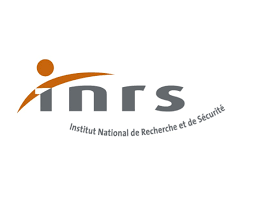Is physical activity a lever for a return to work after cancer? This question was the subject of a study conducted by researchers from the SIRIC ILIAD ReWork programme, whose results were published in the scientific journal Journal of Occupational Rehabilitation in July 2022.
In 2018, 3.8 million people were living with cancer in France. With therapeutic progress and the effectiveness of prevention, the prognosis of some cancers has improved, making it possible to consider a return to work after treatment. However, between the side effects of the treatments and the personal consequences of the disease, returning to work is not easy for everyone. This issue is therefore important in the care of men and women diagnosed with cancer and of working age.
Adapted physical activity (APA): the newcomer to supportive care
In recent years, physical activity has been the subject of numerous studies concerning its effects on fatigue, quality of life, or even on the return to work after a cancer diagnosis. Scientists have shown that physical activity can facilitate a return to work. In order to confirm and clarify this hypothesis, Tête Norbert Wilson, a doctoral student in epidemiology in the ESTER laboratory (Epidemiology in Occupational Health and Ergonomics), and accompanied by the ReWork team of the SIRIC ILIAD, looked into the question of the “dose” of physical activity required.
To return to work, it’s all a question of proportion
« As with any prescription, medicinal or otherwise, the question of dosage is essential. »
Tête Norbert Wilson
How much physical activity is appropriate to improve return to work after cancer? The originality of the study lies in this question. To answer this question, the researchers carried out a systematic review, or more simply, a synthesis of all current knowledge on the subject. In total, 8 scientific articles were analysed.
They showed that physical activity has a positive effect on the return to work after a cancer diagnosis, linked in particular to a reduction in the side effects of treatment. In addition, they specified the dose of physical activity in terms of duration, frequency and intensity:
« We have defined the most appropriate parameters to promote return to work: a 50-60 minute session of moderate to high intensity, twice a week*.»
Tête Norbert Wilson
*Specifically, the most appropriate dose to improve return to work after cancer is between 7.6 MET.h/week and 15 MET.h/week. MET = Metabolic Equivalent for Task.
The most effective exercises are muscle-strengthening exercises, in other words, exercises using body weight (sheathing, squats, etc.) or with weights (dumbbells, weighted balls), but also aerobic exercises such as walking, cycling, dancing or running. These exercises must be supervised by an APA professional, as the effectiveness is improved with the presence of a supervisor (masseur-physiotherapist, specialised sports educators or APA teachers).
Clarify to improve care
Beyond these clarifications on proportions, the ReWork team has defined recommendations for the scientific community. The aim is to help researchers in the discipline to design and implement future research on this issue.
If these results are confirmed by other studies, the definition of an optimal amount of physical activity to return to work will help patients to return to work more quickly, and thus have a good quality of life and the feeling of returning to a “normal” life.
Equipe ReWork :
- Tête Norbert Wilson, PhD student in epidemiology
- Aboubakari Nambiema, epidemiology researcher
- Bertrand Porro, health psychology researcher
- Alexis Descatha, researcher in occupational medicine and health
- Yves Roquelaure, co-leader of the ReWork programme, director of the Ester team and head of the Occupational Medicine and Occupational Pathology Department at Angers University Hospital
Read the scientific paper: https://link.springer.com/article/10.1007/s10926-022-10052-9





